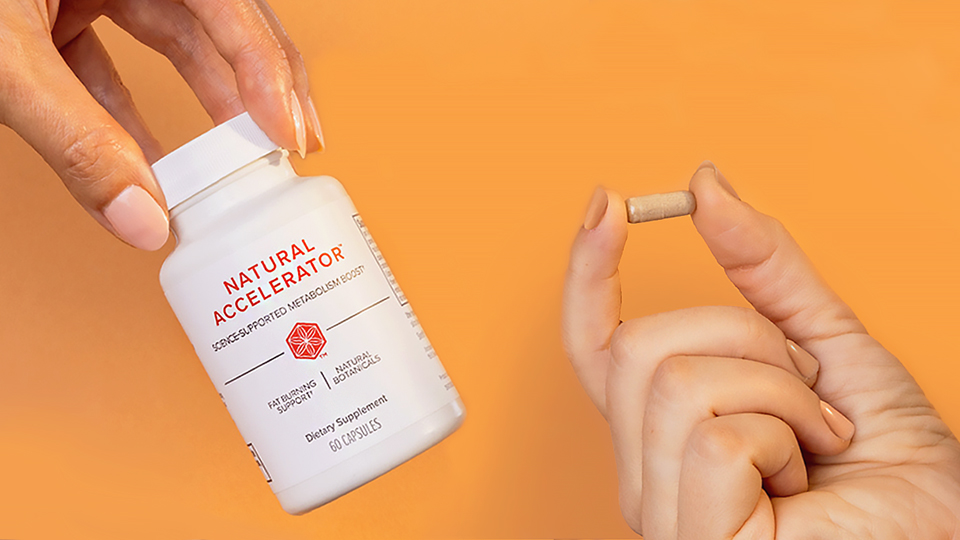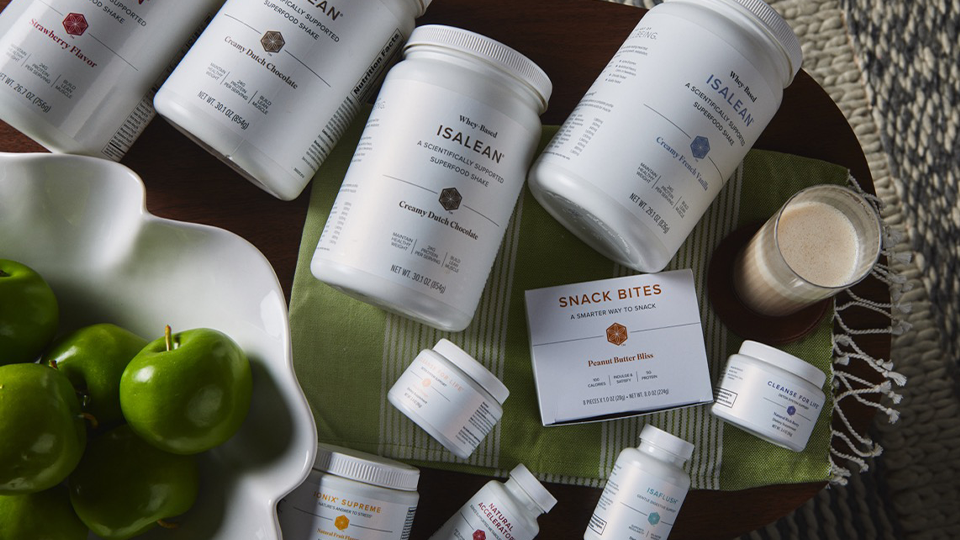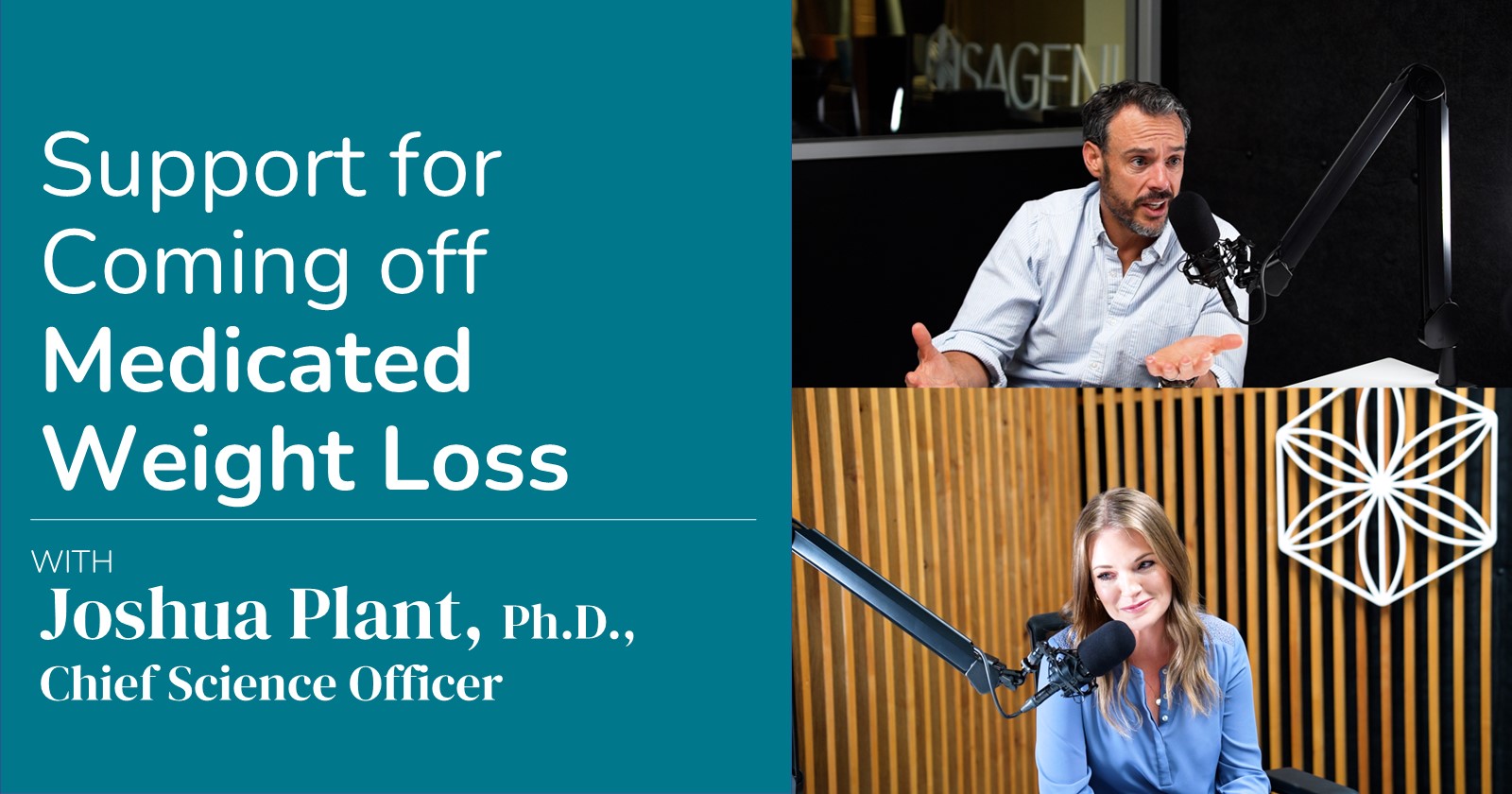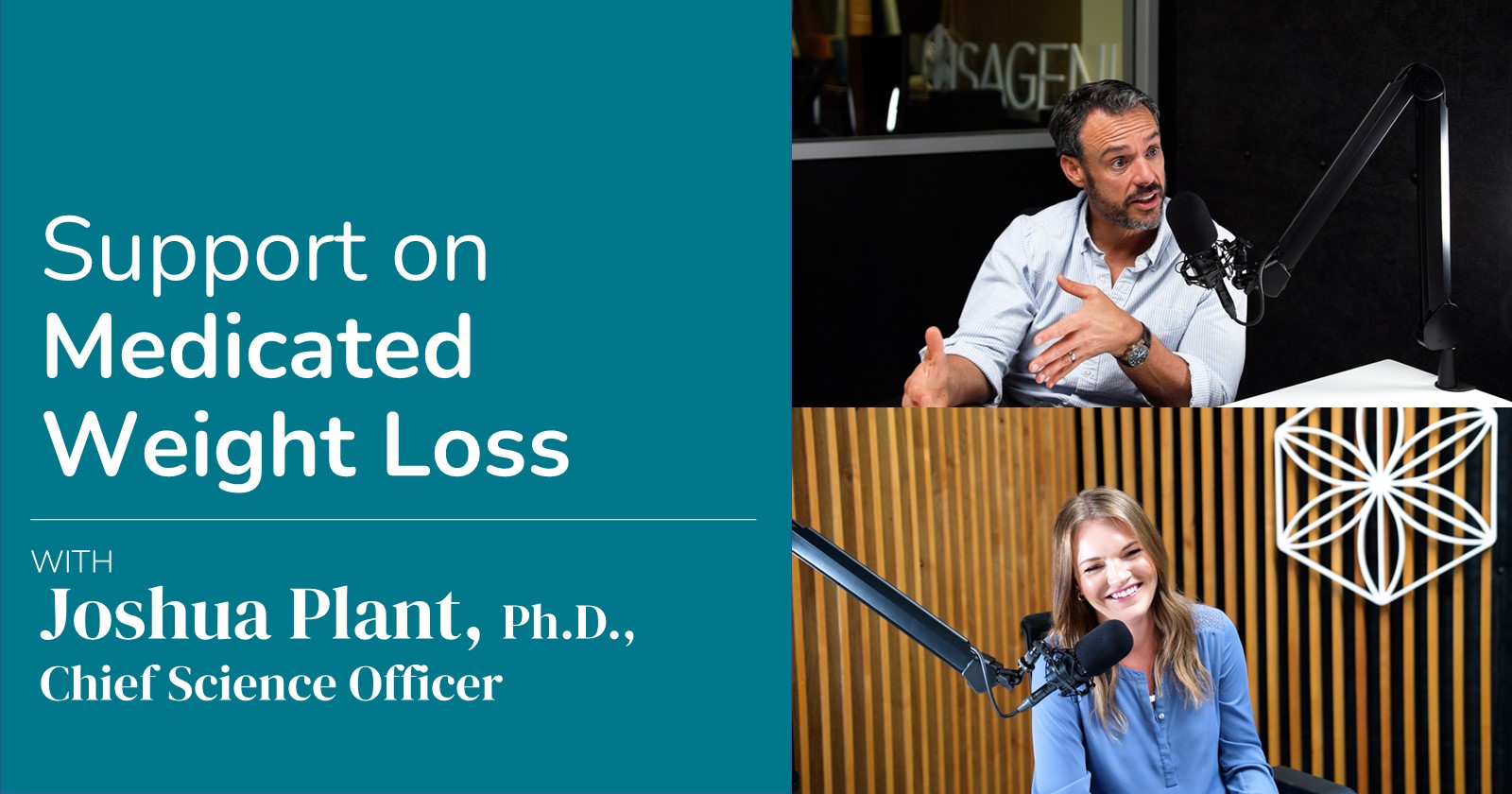The word thermogenesis means “the generation of heat,” but there’s a lot more to this fundamental process in your body than just an increase in temperature. It’s a reflection of metabolic activity and can even play a role in helping you reach and maintain a healthy weight.
Thermogenesis: Burning Calories
Thermogenesis is the process of heat production within the body, which is an indicator of your metabolic rate and how your body burns calories. The biggest component of your metabolism is the energy your body needs to perform basic, life-sustaining functions, known as your basal metabolic rate. Your metabolism increases above this minimum rate when you eat, move, and even when are exposed to cold temperatures, generating heat in the process (1).
Heat is generated in the body in several different ways. A small amount of heat is generated from each reaction that takes place as part of normal metabolism. The heat generated in this way is a byproduct of metabolic chemistry, but it also serves an important purpose in helping the body to maintain a stable internal temperature.
When active, your muscles can generate a substantial amount of metabolic heat. This effect is familiar not only from the experience of a hot, sweaty workout but also from the shivering action of muscles when you are too cold (2).
In addition to these sources of thermogenesis, your body has specialized tissues with the sole function of burning calories to produce heat, known as brown and beige adipose (3). Concentrated around vital organs and a few other key areas, these tissues are composed of functionally distinct fat cells that burn calories instead of storing them. These unique fat cells got their respective names because they are packed with mitochondria, the energy-generating “powerhouse” structures within cells, making them appear darker than ordinary fat cells (3).
Targeting Thermogenesis to Burn More Calories
Some lifestyle and nutrition strategies can increase thermogenesis which is extremely helpful for anyone trying to lose weight or maintain a healthy weight.
Exercise is one way to burn calories, but you might not realize that a workout can help elevate your metabolism for hours after your cooldown. Commonly called the “after-burn effect,” a hard workout can lead to a prolonged increase in thermogenesis as part of recovery from exercise. To get the greatest benefit from this extended calorie burn, research suggests that workouts with high intensity and long duration result in the most significant increase in metabolism (4). Both aerobic exercise and strength training can have this effect with the right intensity and duration.
The thermic effect of food refers to the increase in thermogenesis that occurs after a meal and represents the energy cost of digesting, absorbing, and storing nutrients in food. Fat has the lowest thermic effect, costing almost no energy to digest and store while protein has the greatest thermic effect, with somewhere around 20-30% of the calories you receive from protein going toward digesting, absorbing, and processing this nutrient (5). Carbohydrates have an intermediate effect. This is one of the reasons why getting the right amount of high-quality protein in meals and snacks throughout the day is a powerful tool to help you reach and maintain a healthy weight (6).
Boosting Brown and Beige Fat
As a body tissue with the primary function of burning calories for thermogenesis, brown and beige adipose are important for helping maintain body temperature and become especially active in cold temperatures (7). Some research suggests that these specialized fat cells can help you stay slim, too (8).
If you don’t live in a cold climate or like the idea of taking a cold plunge, there are several ways to support the activity of your brown and beige adipose for greater thermogenesis. A consistent exercise routine can convert ordinary fat cells into beige adipose tissue (9). Researchers aren’t certain why this change occurs, but it helps to increase metabolic rate and burn more calories.
Some bioactive compounds in plants can also enhance the activity of brown and beige adipose to support the body’s ability to burn fat. Certain polyphenols found in citrus fruits have been observed to increase fat burning and enhance thermogenesis by supporting the activity of brown and beige adipose (10-13).
Sinetrol® is a natural combination of polyphenols extracted from citrus fruits including pomelo, grapefruit, orange, and blood orange, and guarana. Sinetrol has been clinically studied and shown to increase both weight loss and fat loss to improve body composition. Natural Accelerator™ provides the same dose of Sinetrol used in the clinical studies that demonstrated the benefits of this potent ingredient (10-13).
Thermogenesis is a fundamental process of normal physiology that reflects metabolic rate. Lifestyle strategies that support greater thermogenesis include consistent exercise, balanced nutrition, and supplementation with bioactive compounds like citrus polyphenols. Combining strategies to enhance thermogenesis can be a valuable approach for anyone looking to reach or maintain a healthy weight.
Sinetrol® is the property of Fytexia.
References
- Westerterp KR. Control of energy expenditure in humans. Eur J Clin Nutr. 2017;71(3):340-344. doi:10.1038/ejcn.2016.237
- Blondin DP, Haman F. Shivering and nonshivering thermogenesis in skeletal muscles. Handb Clin Neurol. 2018;156:153-173. doi:10.1016/B978-0-444-63912-7.00010-2
- Vargas-Castillo A, Fuentes-Romero R, Rodriguez-Lopez LA, Torres N, Tovar AR. Understanding the Biology of Thermogenic Fat: Is Browning A New Approach to the Treatment of Obesity?. Arch Med Res. 2017;48(5):401-413. doi:10.1016/j.arcmed.2017.10.002
- Børsheim E, Bahr R. Effect of exercise intensity, duration and mode on post-exercise oxygen consumption. Sports Med. 2003;33(14):1037-1060. doi:10.2165/00007256-200333140-00002
- Calcagno M, Kahleova H, Alwarith J, et al. The Thermic Effect of Food: A Review. J Am Coll Nutr. 2019;38(6):547-551. doi:10.1080/07315724.2018.1552544
- Halton TL, Hu FB. The effects of high protein diets on thermogenesis, satiety and weight loss: a critical review. J Am Coll Nutr. 2004;23(5):373-385. doi:10.1080/07315724.2004.10719381
- Coolbaugh CL, Damon BM, Bush EC, Welch EB, Towse TF. Cold exposure induces dynamic, heterogeneous alterations in human brown adipose tissue lipid content. Sci Rep. 2019;9(1):13600. Published 2019 Sep 19. doi:10.1038/s41598-019-49936-x
- Harb E, Kheder O, Poopalasingam G, Rashid R, Srinivasan A, Izzi-Engbeaya C. Brown adipose tissue and regulation of human body weight. Diabetes Metab Res Rev. 2023;39(1):e3594. doi:10.1002/dmrr.3594
- Aldiss P, Betts J, Sale C, Pope M, Budge H, Symonds ME. Exercise-induced ‘browning’ of adipose tissues. Metabolism. 2018;81:63-70. doi:10.1016/j.metabol.2017.11.009
- Dallas C, Gerbi A, Elbez Y, et al. Clinical study to assess the efficacy and safety of a citrus polyphenolic extract of red orange, grapefruit, and orange (Sinetrol-XPur) on weight management and metabolic parameters in healthy overweight individuals. Phytother Res. 2014 Feb;28(2):212-8.
- Cases J, Romain C, Dallas C, et al. A 12-week randomized double-blind parallel pilot trial of Sinetrol XPur on body weight, abdominal fat, waist circumference, and muscle metabolism in overweight men. Int J Food Sci Nutr. 2015;66(4):471-7.
- Park SJ, Sharma A, Bae MH, et al. Efficacy and Safety of Sinetrol-XPur on Weight and Body Fat Reduction in Overweight or Obese Adults: A 12-Week, Randomized, Double-Blind, Parallel, Placebo-Controlled Trial. J Med Food. 2020 Mar;23(3):335-342.
- Dallas C, Gerbi A, Tenca G, et al. Lipolytic effect of a polyphenolic citrus dry extract of red orange, grapefruit, orange (SINETROL) in human body fat adipocytes. Mechanism of action by inhibition of cAMP-phosphodiesterase (PDE). Phytomedicine. 2008 Oct;15(10):783-92.





